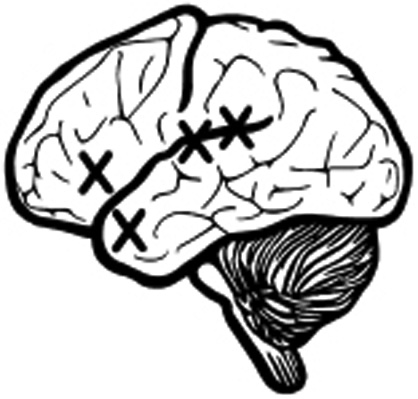
Part III
Sampling Recent Reports
Use words to explain thoughts, but silence once thoughts have been absorbed.
Master Tao-sheng (360–434 C.E.)

8
Recent Clinical Information
Zen practice requires detachment from thoughts.
Ch’an Master Foyan Quingyuan (1067–1120)1
A neurologist’s job is to stop brain damage. Why did the case reports cited in an article and book by Kapur present so counterintuitive a view?2 Because under certain circumstances, damage to the nervous system can actually improve behavioral functions. [SI: 180–186] This result, called paradoxical facilitation, is uncommon. However, in some instances a patient’s brain functions can be enhanced to levels above normal.
In this regard, a common theme links several chapters in this book: we are all patients, suffering from Self-inflicted wounds to the psyche. Sooner or later, most of us start to realize that it is counterproductive to keep overloading our brain with inappropriate and emotionally charged trivia. We discover that trivial distractions stir up troop after troop of monkey-mind word-thoughts that distort the clarity of our awareness. A millennia-tested remedy exists for this constant low-priority chattering in our frontotemporal networks. It is to learn to meditate in relaxed, attentive silence. This does not necessarily mean Buddhist meditation. Some forms of Christian apophatic centering prayer also bypass the usual mental clutter caused by our cognitive and emotional dissonances.3
Consider the implications of the report by Etcoff and colleagues.4 These authors found paradoxical facilitation in patients who had a chronic receptive aphasia caused by a particular kind of left posterior brain damage. These ten patients could not understand spoken language. However, the researchers were more interested in certain brain functions other than this chronic loss of word comprehension. Accordingly, they designed their study to test these patients’ capacities to analyze the subtle emotional clues that are hidden in facial expressions. When the patients were shown videotapes of normal human faces their task was to discern, just from these dynamic expressions, which of these persons were lying. It turned out that aphasic patients who had left posterior brain damage made significantly better judgments about which persons were lying than did their 20 matched controls. Half of these controls had normal brains; the other half were patients who had chronic brain damage on their right side.
In 2008, Taylor reported a personal odyssey that began with an acute, major left-sided hemorrhagic stroke.5 A noteworthy aspect of that report was that the damage appeared to dissolve both (1) her receptive and expressive speech functions, and (2) her left central areas involved in somatosensory functions. In the inner silence caused by this severe left hemispheric brain damage, she then became a selfless witness to some of that sense of unification and inner peace that certain normal persons might experience during a so-called peak experience.6, 7 [SI: 152, 294]
These case reports indicate that gross lesions to cortex, white matter tracts, and subcortical regions, however interesting in themselves, seem more often to give rise to further questions rather than final answers that are of authentic spiritual significance. [MS: 193–195, 227]
When we look back at the comments made by the early masters Tao-sheng and Foyan; when we consider the discussions in chapters 5 and 6, examine the reservations based on gross anatomical and clinical grounds, as well as those in the lengthy notes,8 what is the take-home message? This range of evidence seems to be an open invitation to keep asking, How do words get in our way? Could rigid entanglements that arise, directly or indirectly, among language networks in our left hemisphere compromise our awareness of the world, hinder our access to intuitive functions that might otherwise help us express innate degrees of insight?9 If so, then what role might meditation play in reversing this situation?